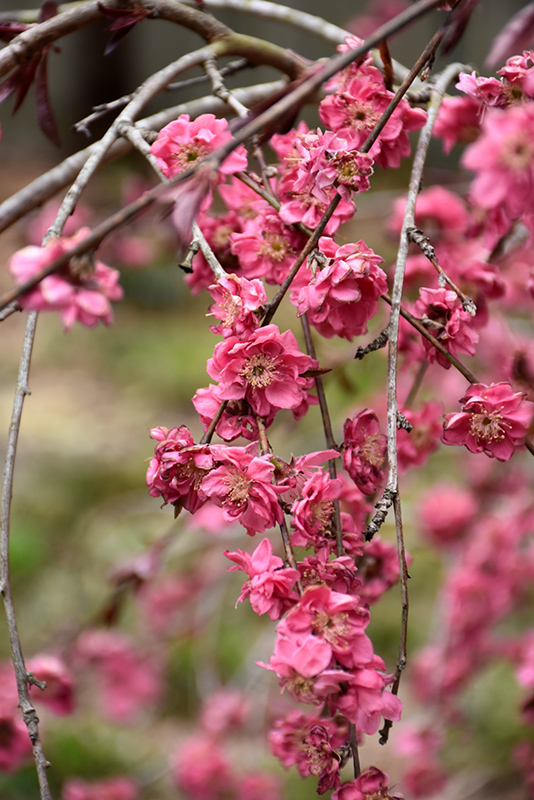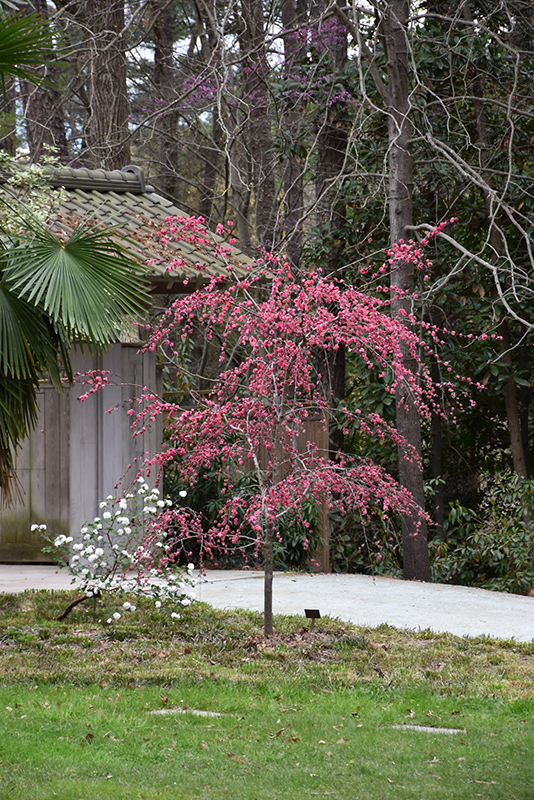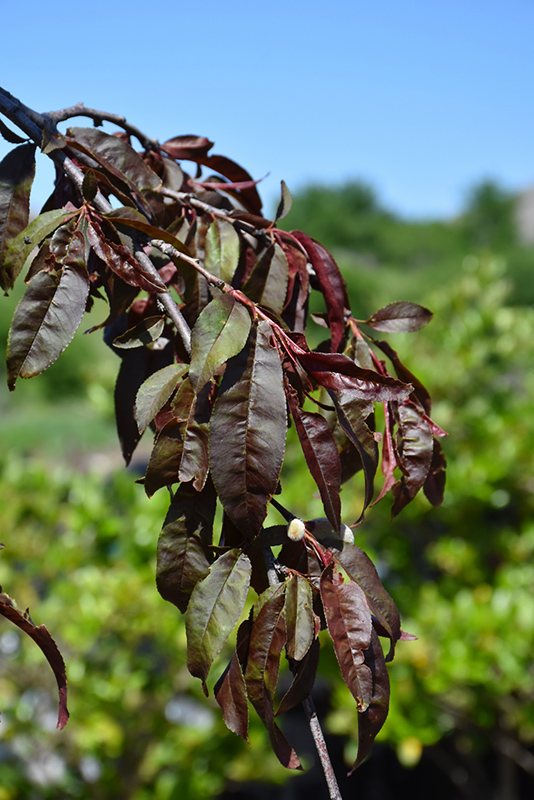>> Home
Crimson Cascade Weeping Peach
Prunus persica 'Crimson Cascade'
Height: 12 feet
Spread: 8 feet
Sunlight:
![]()
Hardiness Zone: 5
Other Names: Common Peach
Brand: Greenleaf Nursery
Description:
This graceful, weeping selection is covered with red double flowers in early spring, followed by deep burgundy new foliage that fades to green-burgundy by mid-summer; primarily used as an ornamental, fruit is small and poor quality
Ornamental Features
Crimson Cascade Weeping Peach is bathed in stunning clusters of fragrant double red flowers with pink overtones along the branches from early to mid spring before the leaves. It has attractive burgundy-variegated green foliage which emerges burgundy in spring. The glossy narrow leaves are highly ornamental and turn yellow in fall.
Landscape Attributes
Crimson Cascade Weeping Peach is a deciduous tree with a rounded form and gracefully weeping branches. Its average texture blends into the landscape, but can be balanced by one or two finer or coarser trees or shrubs for an effective composition.
This tree will require occasional maintenance and upkeep, and is best pruned in late winter once the threat of extreme cold has passed. Gardeners should be aware of the following characteristic(s) that may warrant special consideration;
- Messy
- Insects
- Disease
Crimson Cascade Weeping Peach is recommended for the following landscape applications;
- Accent
- General Garden Use
Planting & Growing
Crimson Cascade Weeping Peach will grow to be about 12 feet tall at maturity, with a spread of 8 feet. It has a low canopy with a typical clearance of 2 feet from the ground, and is suitable for planting under power lines. It grows at a medium rate, and under ideal conditions can be expected to live for 40 years or more.
This tree should only be grown in full sunlight. It does best in average to evenly moist conditions, but will not tolerate standing water. It may require supplemental watering during periods of drought or extended heat. It is not particular as to soil type or pH. It is highly tolerant of urban pollution and will even thrive in inner city environments, and will benefit from being planted in a relatively sheltered location. This is a selected variety of a species not originally from North America.


